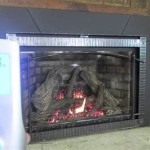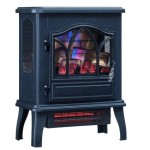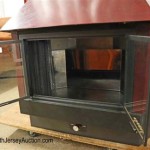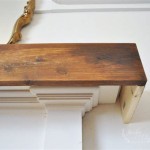Stone and Wood Fireplace Designs: A Timeless Fusion of Natural Elements
The enduring appeal of fireplaces stems from their ability to provide warmth, visual ambiance, and a focal point for any living space. When incorporating natural materials like stone and wood, fireplaces transcend mere functionality to become statement pieces that enhance the aesthetic character of a home. The combination of stone and wood in fireplace designs offers a rich tapestry of textures and colors, creating a sense of rustic elegance or modern sophistication, depending on the specific materials and design choices employed.
This article explores various aspects of stone and wood fireplace designs, examining the considerations involved in material selection, design styles, and installation techniques. It aims to provide a comprehensive overview for homeowners, architects, and designers seeking to integrate this timeless combination into their projects.
Material Selection: Stone Varieties and Wood Types
The selection of stone and wood is paramount to achieving the desired aesthetic and ensuring the longevity of the fireplace. Both materials offer a wide array of options, each with unique characteristics and visual appeal. The choice should be guided by the overall design intent, the architectural style of the home, and the desired level of maintenance.
Stone options for fireplaces are diverse, ranging from natural stones like granite, marble, slate, and limestone to manufactured stone veneers. Natural stone offers a unique, organic appeal, with variations in color, texture, and veining that contribute to its individuality. Granite, known for its durability and resistance to heat, is a popular choice for fireplace surrounds and hearths. Marble, with its elegant veining and polished surface, adds a touch of luxury. Slate’s distinct layering and dark hues provide a contemporary and dramatic look. Limestone offers a more subtle and earthy aesthetic, blending seamlessly with various design styles.
Manufactured stone veneers, also known as cultured stone, are a cost-effective alternative to natural stone. These veneers are made from a concrete mixture molded to resemble natural stone shapes and textures. They offer several advantages, including lighter weight for easier installation, greater consistency in color and texture, and a wider range of available styles. However, they may not possess the same inherent character and longevity as natural stone.
The choice of wood for mantels, shelves, and decorative accents is equally important. Hardwoods like oak, maple, cherry, and walnut are favored for their durability, strength, and rich grain patterns. Each wood species offers a distinct color and texture, allowing for a wide range of design possibilities. Oak, with its classic grain and warm tones, is a versatile choice that complements various stone types. Maple, known for its smooth surface and light color, offers a more contemporary and minimalist aesthetic. Cherry, with its reddish-brown hue and elegant grain, adds a touch of sophistication. Walnut, with its dark, rich color and distinctive grain pattern, creates a luxurious and dramatic effect.
Reclaimed wood is another popular option, offering a unique sense of history and character. Reclaimed wood, sourced from old barns, factories, or other structures, often features weathered surfaces, nail holes, and other imperfections that add to its rustic charm. It is an environmentally friendly choice that helps to reduce waste and preserve natural resources.
Design Styles: From Rustic to Modern
The combination of stone and wood lends itself to a wide range of design styles, from rustic and traditional to modern and contemporary. The specific design choices, including the type of stone, the type of wood, and the overall form of the fireplace, determine the ultimate aesthetic.
Rustic stone and wood fireplaces typically feature natural stone with a rough, textured surface, such as river rock or fieldstone. The wood used for the mantel or other accents is often reclaimed or distressed, with a weathered appearance that adds to the rustic charm. These fireplaces evoke a sense of warmth, comfort, and connection to nature, often incorporating elements like exposed beams or stone hearths. The scale tends to be substantial, emphasizing the solidity and permanence of the structure.
Traditional stone and wood fireplaces often incorporate more refined materials, such as marble or limestone, with smooth, polished surfaces. The wood used for the mantel and other accents is typically hardwood with a classic finish, such as a stain or varnish. These fireplaces often feature decorative details, such as ornate carvings or moldings, that add to their elegance and formality. The overall design tends to be symmetrical and balanced, reflecting a sense of order and tradition.
Modern stone and wood fireplaces often feature clean lines, minimalist forms, and a focus on functionality. The stone used for the fireplace surround is often a sleek, contemporary material, such as slate or concrete, with a smooth, unadorned surface. The wood used for the mantel or other accents is typically hardwood with a simple, modern finish, such as a clear coat or a matte stain. These fireplaces often incorporate features like floating mantels, recessed lighting, or built-in storage, emphasizing their clean and streamlined aesthetic. They may also feature a linear firebox, creating a long, horizontal flame that complements the modern design.
Contemporary stone and wood fireplaces blend elements of both modern and traditional styles, creating a unique and personalized aesthetic. They may incorporate natural stone with a contemporary finish, such as honed limestone or textured granite, paired with hardwood with a modern stain or finish. These fireplaces often feature asymmetrical designs, unexpected material combinations, and a focus on visual interest. They may incorporate features like glass panels, metal accents, or custom-designed shelving, adding to their unique and individual character.
Installation and Safety Considerations
The installation of a stone and wood fireplace requires careful planning and execution to ensure both safety and aesthetic appeal. It is essential to consult with qualified professionals, including architects, contractors, and fireplace installers, to ensure that the fireplace is installed correctly and meets all applicable building codes and safety standards.
The first step in the installation process is to ensure that the fireplace has adequate structural support. Stone fireplaces are typically quite heavy, and the floor beneath the fireplace must be able to support the weight of the stone. In some cases, it may be necessary to reinforce the floor or foundation to provide adequate support. A qualified structural engineer can assess the structural requirements and recommend any necessary modifications.
The fireplace must also be properly vented to ensure that smoke and other combustion byproducts are safely exhausted from the home. The venting system must be properly sized and installed to prevent backdrafting or other safety hazards. A qualified fireplace installer can determine the appropriate venting system for the fireplace and ensure that it is installed correctly.
The fireplace must also be constructed from fire-resistant materials to prevent the spread of fire. The fireplace surround, hearth, and other exposed surfaces must be made from non-combustible materials, such as stone, brick, or concrete. The wood used for the mantel and other accents must be installed at a safe distance from the firebox to prevent it from catching fire. Building codes typically specify minimum clearances between the firebox and combustible materials.
Finally, it is essential to follow all manufacturer's instructions for the operation and maintenance of the fireplace. This includes regularly cleaning the chimney to remove creosote buildup, inspecting the fireplace for any signs of damage or wear, and using only approved fuels. Proper operation and maintenance will help to ensure the safety and longevity of the fireplace.
In conclusion, stone and wood fireplaces offer a timeless and versatile design element that can enhance the aesthetic appeal and functionality of any home. By carefully considering the material selection, design style, and installation techniques, homeowners, architects, and designers can create stunning and safe fireplaces that provide warmth, ambiance, and a focal point for living spaces for years to come.

65 Best Stone Fireplace Design Ideas To Ignite Your Decor Designs Home Farmhouse

Creative And Beautiful Fireplace Design Ideas Our Top Picks Stone Center

50 Sensational Stone Fireplaces To Warm Your Senses

50 Sensational Stone Fireplaces To Warm Your Senses Home Fireplace Timber Frame Interior Rustic Farmhouse

Stone Veneer Fireplace Ideas That Will Warm Up Your Home Ply Gem

Natural Stacked Stone Veneer Fireplace Ideas

Stone Fireplaces

50 Sensational Stone Fireplaces To Warm Your Senses

25 Stone Fireplace Ideas For A Cozy Nature Inspired Home Surround Country

Stacked Stone Fireplace 10 Luxurious Design Ideas Stoneyard
Related Posts








